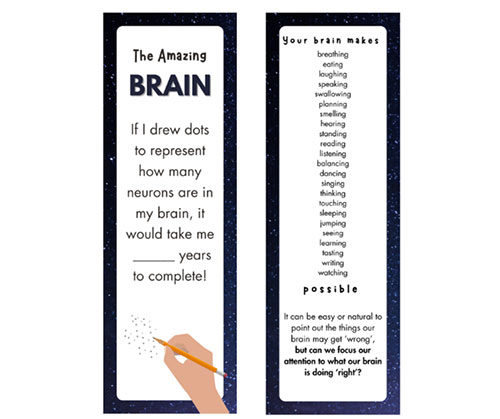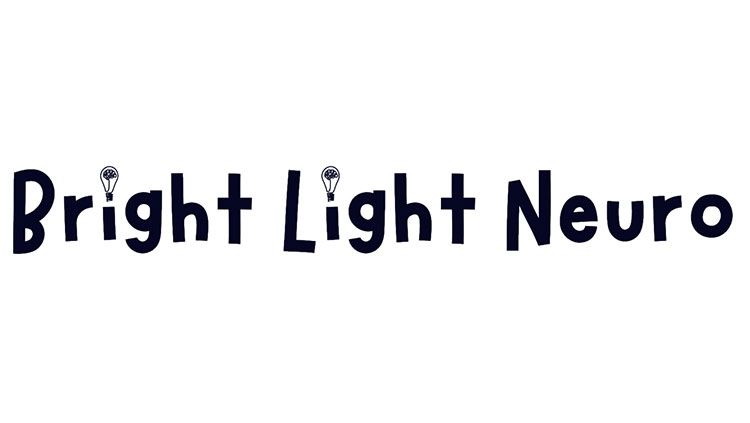Bright Light Neuro: Brain Basics, Lesson 1 — How Many Neurons Do We Have?
- Published19 Mar 2024
- Source Bright Light Neuro
The goal for lesson one is to develop an appreciation of the complexity and intricacy of how the brain communicates.
Content Area:
- Science
- Nonfiction reading
- Math
Standards (NGSS)
- 4-LS1-2: Structure, Function, and Information Processing
- 4-PS4-2: Develop a Model to Describe Phenomena
What are we learning?
The brain has around 100 billion neurons.
Why are we learning this?
To understand that the brain is very complex.
Materials:
- Presentation for class
- “Complexity of the Brain” worksheet, printed
- Bookmarks, printed

Reference Bright Light Neuro’s Brain Basics Teaching Unit.
CONTENT PROVIDED BY
Bright Light Neuro
Transcript
EMMA BLEAKMAN:
Lesson one begins by teaching students that the brain is really complex with around a hundred billion neurons. The number is more so probably 86 billion, but for the sake of this activity, we have a hundred billion.
And it begins with this reading. This is a metaphorical comparison of someone that orders a pair of Air Jordans and all of the steps that happen before those Air Jordans get to their house.
Now, I tested this and my fourth grade students thought Air Jordans were cool. If your students don't think Air Jordans are cool, let me know. I'll change the shoe. But right now we're working with Air Jordans, and so we talk about how it goes from a forklift, to a truck, to a plane, to a van, to your house. And those vehicles pass along this message. And that's very similar to how your brain works. You have neurons, which are like the vehicles, and they pass along neurotransmitters, which are the messages that they're passing along.
And so you can see here that packages are the messages being passed between vehicles in a city. And you can relate this to neurotransmitters are the messages passed between neurons in the brain. And so, after students understand this comparison, we then say, well, how many neurons does our brain have? And we land on this number, a hundred billion. But that's really hard to wrap your head around. It's easy to say, but to understand the scope of it is a different thing.
And so, they do this really cool activity, and inside that circle, they take their pencil and they have a minute to draw as many dots as they can. As they draw the dots, they count, they end up with a number between like 50 and 300. A couple of my kids told me that they did 500, I don't believe them, but it doesn't matter. So, they write that number down, and then they write down a hundred billion.
And then they have to do some pretty complex math. They can use a calculator. I recommend modeling this for your students first. I had my kids just knock off the decimal points. That wasn't the point of the lesson. So I was like, just ignore them for now. We'll come back to it. And eventually, they find out how many minutes it would take them to draw how many neurons there are in the brain.
They then take that number and figure out, well, how many hours would it take? They then take that number and say, well, how many days would it take? And then they take that number, and how many years would it take? They get a number between 500 and 2,000 years, which really helps us conceptualize just how many neurons are in our brain, which is really incredible.
And so, they all show the size of their brain. They take a fist, and they — I can't do it with the mic — but they put their hand over it, which is about the size of the human brain, and they think for a minute: Can you imagine a number that big inside of your brain? And it's just a moment of awe and fascination for how incredible that organ is inside our head.
What to Read Next
Also In For the Classroom
Trending
Popular articles on BrainFacts.org












